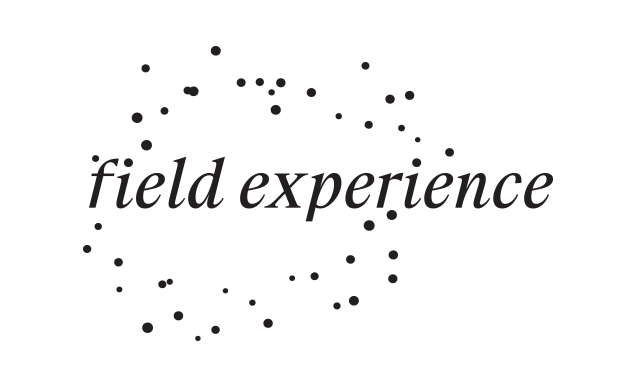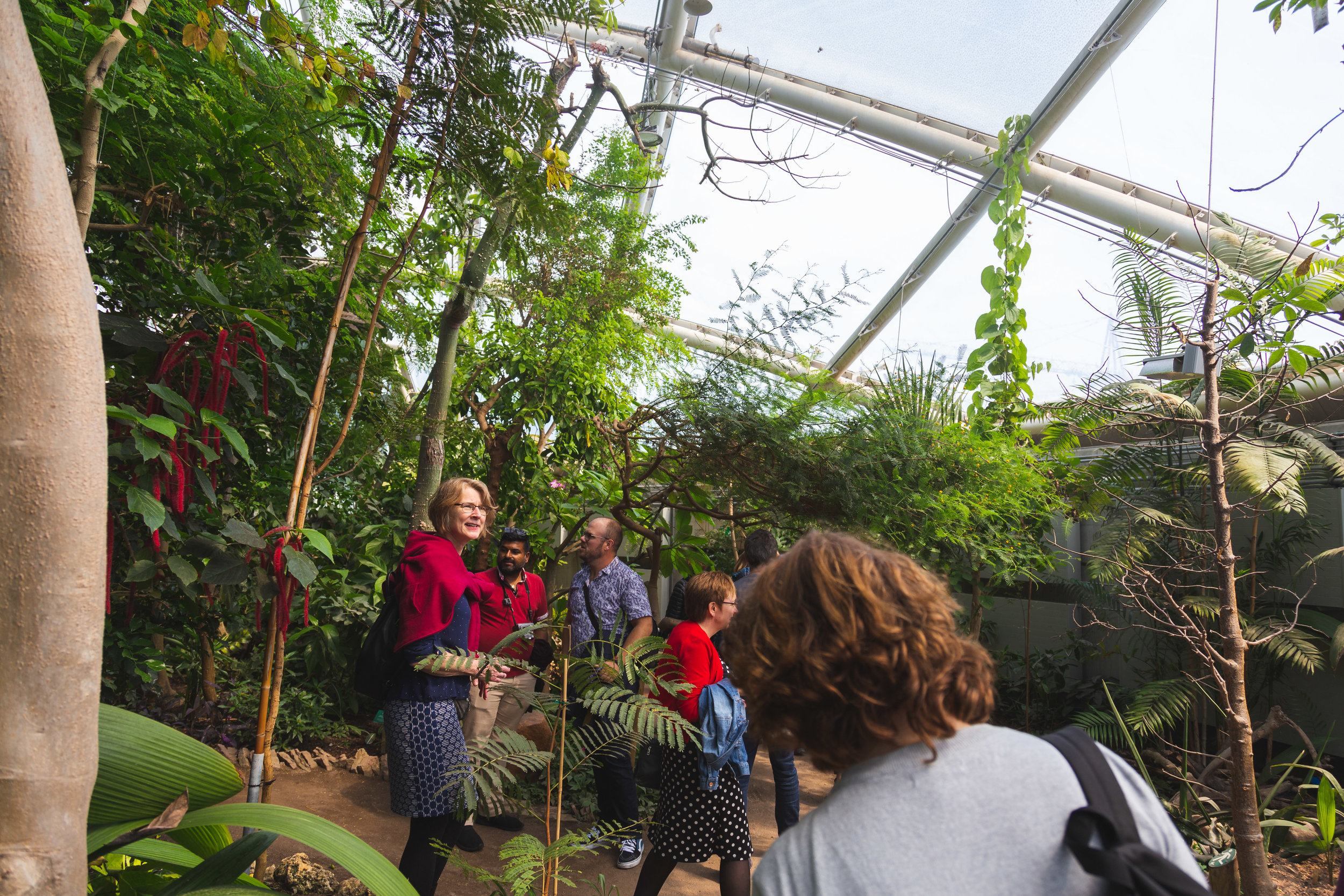Exploring Danish Wellbeing
The following is an example of a one day inspiration tour in Aarhus, Denmark. We led a group of 25 people who work with libraries on an exploration of Danish wellbeing. For many years, Denmark has been identified as one of the happiest countries in the world. This is due in part to their unique philosophies about wellbeing and togetherness. We wanted to experience a few of the behaviors and patterns of action that produce these cultural qualities. The fundamental purpose of the tour was oriented toward opening new lines of inquiry rather than having answers. We were driven by this question: How might we create a greater sense of wellbeing in our libraries?
1. The inspiration tour began with a group huddle to set the stage for the day. We started with ground rules (e.g. be open and present), we reviewed the custom inspiration kit and had a ritual poem reading that embodies the spirit of the day. In this case, it was Mary Oliver’s Invitation. The kit also included keywords that frame the experience.Three of the words for this tour were: hygge, trivsel, and faelleskab. These are untranslatable Danish words that roughly mean coziness, wellbeing, and community. One of our Danish colleagues gave the group a more in-depth sense of their meaning.
2. On this tour we walked everywhere. Whenever possible, on inspiration tours the group walks to each destination (and we will also take public transportation). On this tour, it was an important time to see the place, process information, and have conversations with the other members of the group. Walking allowed for the pace and scale to create opportunities for observation and connection. It also became a great way to spontaneously stop and follow ideas or inquire about places that came up along the way.
3. Our first stop was a conversation with Jesper Broberg Bang, the founder of Gejst Studio. Gejst is a very special design studio and Jesper leads with great compassion in order to create a strong sense of wellbeing for the team. At Gejst, they only hire enough employees that will fit around a table because they value relationships more than scale.They work 30 hour weeks, make time for personal projects, and take hospitality very seriously, greeting all their guests with a beautiful, spread of croissants, coffee, and candles.
4. After each visit, the group re-huddled to discuss ideas that inspired us, that surprised us, or that we disagreed with. We also thought about why we visited this place. For example, design studios are different from public libraries, but many of the concepts we learned are applicable to a library context. After the visit to Gejst, we discussed the beauty of fitting a team around the dinner table, general ideas of wellbeing at work, how 30 hour work weeks might be perceived in the public sector (especially among taxpayers), and the role of beauty in libraries.
5. Our lunch activity was at the rooftop of a store called Saling. The group was instructed to partner up with someone that they don’t know. Then the pairs were free to select their lunches, and they were required to buy one item to share (this is a way to experience togetherness and hygge). Some pairs bought fruit to share, wine, or chocolate. There were also discussion questions related to how you welcome people into your library,and how ensure your employees are thriving.During this time they pairs shared their food and experiences they’d had at their libraries.
6.The rooftop of Saling also offered a magnificent view of the city of Aarhus on a special deck that extended beyond the rooftop. Walking out on the deck allowed the participants (many had never visited Aarhus before) to get an overview of the city. For some this activity also involved taking a risk because of the extreme heights, and the glass floors. We encourage people to take small risks on inspiration tours as it fosters a sense of transformation, and builds courage for new learning experiences.
7. During inspiration tours, people tend to walk in groups of 2 and 3. As we walked through the streets of Aarhus there were rich conversations about their lives and work - many people who had never met felt a strong sense of connection to others in the group. A big part of this experiences was to connect with other people through exploration. We also encouraged the group to think of themselves as a walking sculpture - that we are all creating and building something together. In this image, we are walking from lunch to the Botanical Garden.
8. The Aarhus botanical garden is located very centrally in the city of Aarhus. It is in walking distance to the city center, and is a scale that is manageable to explore in a short period of time. Many of the design elements within the botanical garden are reflective of Danish wellbeing. The small scale, the interactive built elements and the idea that recreation is not entertainment, but an opportunity for togetherness and an expression of ideology. All of the inspiration tours are about multi-sensory experience, and sites like botanical gardens help us connect to our senses.
9. Next we visited a cemetery in Aarhus which revealed a new layer of meaning about Danish wellbeing and ideas of togetherness. The cemetery was designed like a park, and is used by the public (this is also true of other cemeteries on Denmark). They are not simply spaces for grieving, but are also used for things like exercise, having coffee or reading a book. Some families put benches near their loved ones’ grave sites in order to spend time there as a form of familial togetherness. In this image, one of our participants, spends time on one of the benches. In Aarhus cemeteries are not wasted city space, but a place for public use to create a meaningful and temporal sense of togetherness.
10. Aarhus is located on the sea so our final debrief was done in pairs at the Harbor baths designed by Bjarke Ingalls. It is a public space for the community to gather together in a purposeful way. In order to debrief the group used this deck of cards (which was part of the inspiration kit). They have questions that support conversation, encourage making sense of the experience, and to build bridges to their context. Participants paired up, selected questions they wanted to answer, and shared with each other as they sat or walked around the harbor. Questions included: What is one idea you will take back to your context? Why did we visit this place? What new questions do you have?, and How will you tell this story to others?










